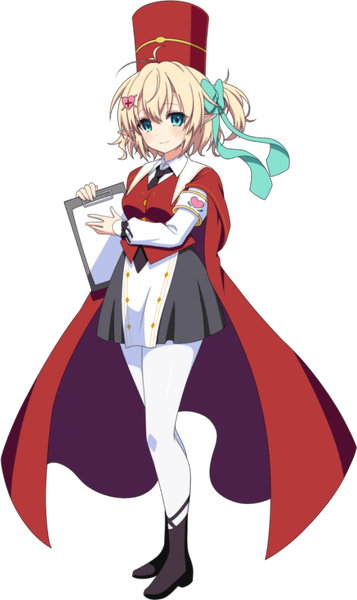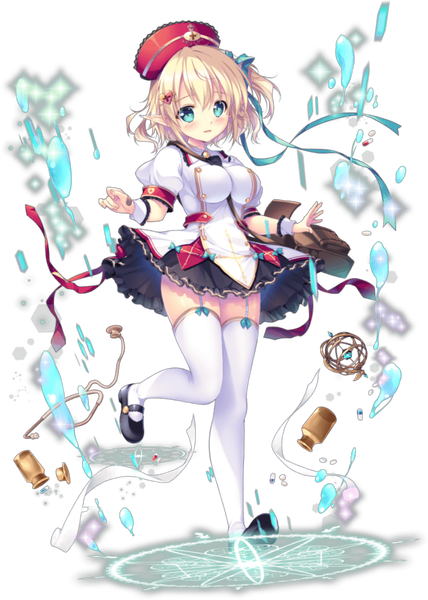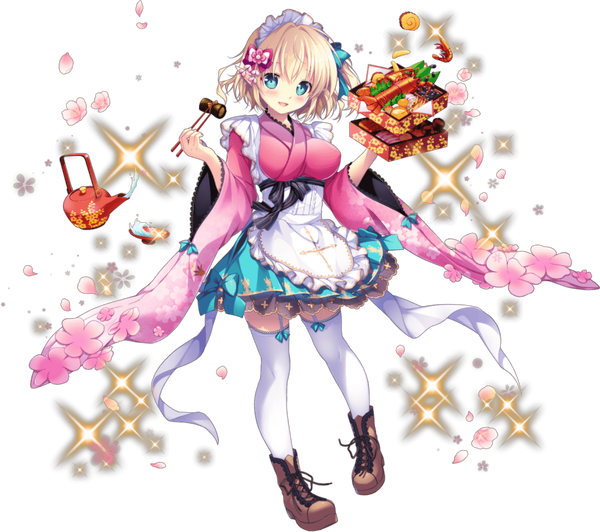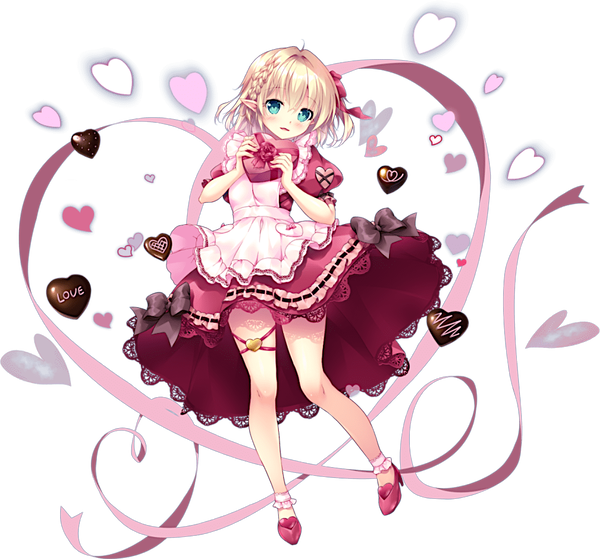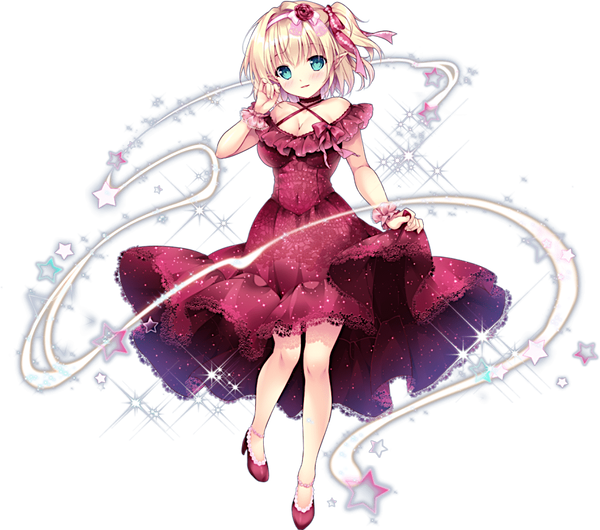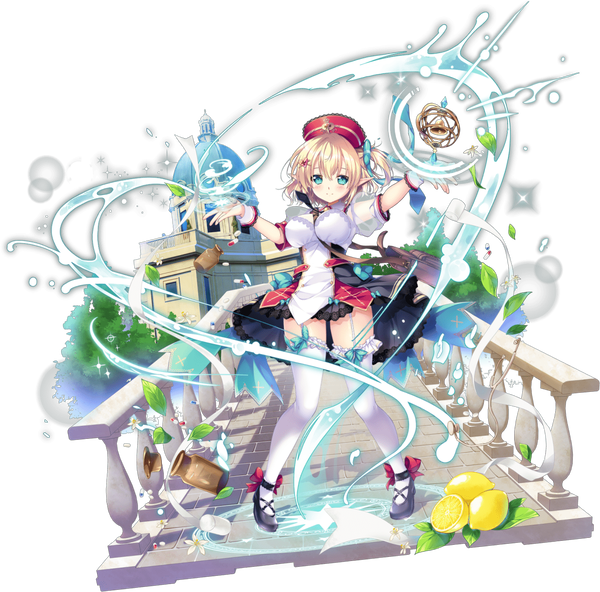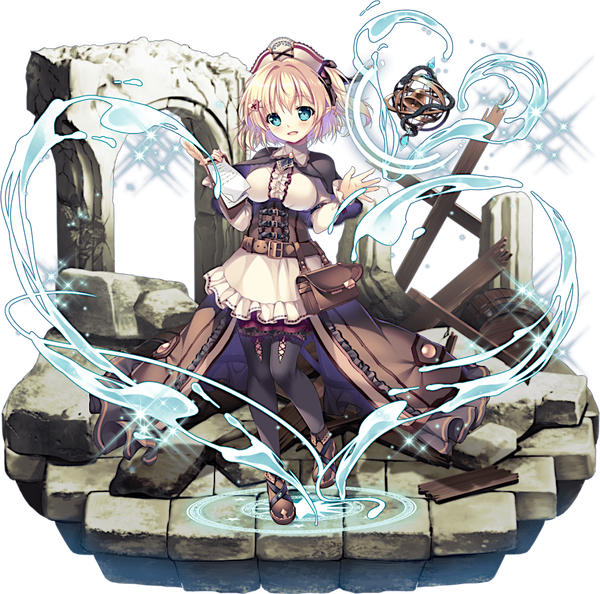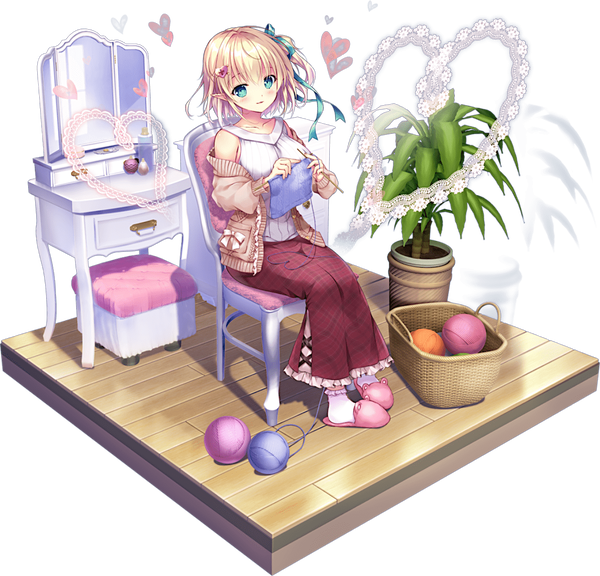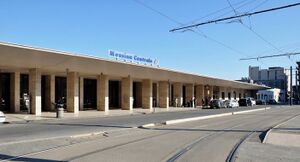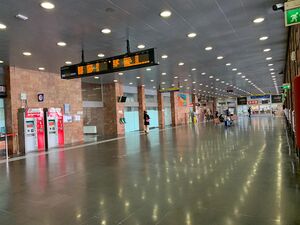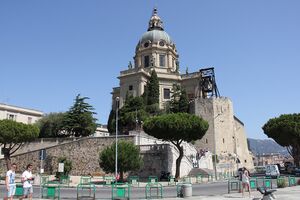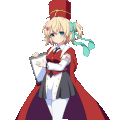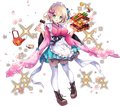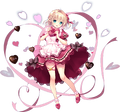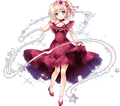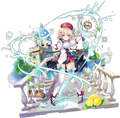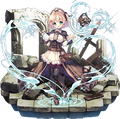Messina
| Messina | |||||
|---|---|---|---|---|---|
| Japanese Name | メッシーナ | ||||
| Weapon | |||||
| Race | Elf | ||||
| Nationality | |||||
| Birthday | December 28 | ||||
| Constellation | Capricorn | ||||
| Talents | Using magical artifact as painkillers | ||||
| Likes | All people that live healthily and happily | ||||
| Dislikes | Sickness/injuries, War, Natural disasters | ||||
| Strengths | An incredibly skilled nurse | ||||
| Weaknesses | Unable to completely control her own magical artifact | ||||
| Hobbies | Crushing up trash, Reading, Knitting | ||||
I joined the SSS as a medic. You can think of me as a doctor on the battlefield. I'll treat the wounds of whoever gets hurt, take them away on a stretcher... And deliver the coup de grace if they don't seem like they're gonna make it... That last bit was una battuta. A joke, just a joke us medics tell.
Layers
| Icon | Title | Release Date | Where to Obtain |
|---|---|---|---|
| [The Kind Medic] Messina | 2022 May 11 (EN) | [Training Camp - Messina] Event Reward | |
| [A Healing Smile] Messina | 2022 May 1 (EN) | [An Angel in the Isolation Ward] Event Reward | |
| [Prayer for Good Health] Messina | 2022 January 1 | [New Year Hunt! Want to Catch a Tiger!] Limited Gacha | |
| [Nice and Sweet Valentine] Messina | 2024 February 1 | [The Utopia of the Cacao Fruit] Event Reward | |
| [Staring at Me's a No-No] Messina | 2024 March 15 | 3.5 Anniversary Limited Gacha 1 | |
| [Pain, Pain, Go Away!] Messina | 2022 May 1 (EN) | [An Angel in the Isolation Ward] Limited Gacha | |
| [Angel on the Battlefield] Messina | 2022 October 7 | Tower Ticket Gacha, Panel Mission | |
| [Loving Time Spent Together] Messina | 2024 January 31 | [The Utopia of the Cacao Fruit] Limited Gacha |
Skills
Trivia
- Messina's birthday is the date of the 1908 Messina earthquake.
- Messina's dislike of natural disasters is also a reference to the earthquake. The Messina Earthquake occurred on 28 December in Sicily and Calabria, southern Italy with a moment magnitude of 7.1 and a maximum Mercalli intensity of XI (Extreme). The epicentre was in the Strait of Messina which separates Sicily from the Italian mainland. The cities of Messina and Reggio Calabria were almost completely destroyed and between 75,000 and 82,000 lives were lost. It was the most destructive earthquake ever to strike Europe.
- Messina's weapon is a reference to Asclepius, a hero and god of medicine in ancient Greek religion and mythology. The rod of Asclepius, a snake-entwined staff, (similar to the caduceus) remains a symbol of medicine today. Those physicians and attendants who served this god were known as the Therapeutae of Asclepius.
- Her dislike for war is a reference to the numerous wars throughout history that occurred around Messina - The Battle of the Strait of Messina (276 BC), Messina Revolt (1672–78), Siege of Messina (18 July-15 October 1718), and the Battle of Messina (August 17, 1943).
- Her dislike for disease references the origins of the Black Death. In October 1347, twelve Genoese ships from the East arrived to Messina on Sicily. After the Genoese came ashore, the inhabitants of Messina started to develop abscesses, cough and die. The Genoese were immediately banished from the city, but the illness spread with such speed that the city experienced a collapse of social order. The sick wished to be cured, to make wills and to take the confession, but both physicians, notaries and priests were infected and soon refused to go near them; people abandoned their homes, which were pillaged by criminals without being stopped by the guards and officials, who also died.
- Messina's thematic takes inspirations from the relief efforts of the Red Cross and sailors of the Russian and British fleets during the 1908 Messina earthquake.
- The building in the background of [Pain, Pain, Go Away!] is the Church of Christ the King in Messina on the island of Sicily, Italy.
- The ruins in the background of [Angel on the Battlefield] is the ancient theatre of Taormina (Italian: Teatro antico di Taormina), an ancient Greek theatre in Taormina, Sicily, built in the third century BC.
Counterpart
Stazione di Messina Centrale or Messina Centrale is the main railway station of the Italian city of Messina in Sicily. As Palermo Centrale, Catania Centrale and Syracuse it is one of the most important stations of its region. It is owned by the Ferrovie dello Stato, the national rail company of Italy.
The station, originally named simply as Messina, was inaugurated on 12 December 1866, as the terminal of the railway to Taormina, the first section of the Messina-Catania-Siracusa line. Heavily damaged after the 1908 earthquake, it was repaired a few years later. In 1939 it was finally renewed and replaced by the modern Messina Centrale, with the station building projected by the architect Angiolo Mazzoni.
The new station building was projected following the modern criteria of the futurist architect Angiolo Mazzoni, and is extended through the stations square. Messina Centrale station is at almost contiguous with Messina Marittima station, located by the port and constituting a rail/ferry interchange point to Villa San Giovanni station across the Strait of Messina.
The station is electrified and served by regional trains, by an experimental suburban railway to Giampilieri and by the modern Messina tramway (at "Repubblica" stop, on station's square), opened in 2003. For long distance transport it counts some InterCity and Express trains to Rome, Turin, Milan and Venice, linking it also with Genoa, Naples, Bologna, Florence, Pisa and other cities. It is also part of the projected Berlin–Palermo railway axis. Wikipedia
Temple Christ the King (Sacrario di Cristo Re) is a Baroque-style church in Messina. The temple was built on the remains of the castle of Matagrifone of which one of the towers has survived, incorporated at the base. Designed by Giovanni Battista Milani in 1937, it dominates the city with its large dome and its shapes resembles the architecture design of Filippo Juvarra from Messina, in particular the basilica of Superga on the hill of the same name in Turin.
The building was built in Baroque style and has an irregular octagonal shape with a large dome marked by eight ribs, at the base of which there are eight bronze statues of Teofilo Raggio, depicting: the three theological virtues of Faith, Hope and Charity; the four cardinal virtues of Prudence, Justice, Fortitude and Temperance; the allegory of Religion. On the dome are superimposed a lantern six meters high, a ball with a diameter of one meter and above all a cross. The staircase at the entrance features the statue of Christ the King, sculpted by Tore Edmondo Calabrò. The shrine holds the remains of 1288 fallen soldiers from the Second World War: 161 unknown, most of whom were killed during the defence of Sicily, and 110 fallen in the First World War.
The upper temple has a Baroque altar, a chapel dedicated to the Virgin and an octagonal balcony overlooking the lower temple. The lower temple has Doric columns with Corinthian capitals arranged around an octagon; inside, in a central position and visible from the upper level, is a marble sarcophagus on which a figure of a soldier is lying, the work of Antonio Bonfiglio. A plaque commemorates the sailors who fell in the naval battle of Punta Stilo on 9 July 1940. In the walls, thousands of niches house the remains of those who fell in the two world wars. On the octagonal tower is a bell with a diameter of 2.80 metres, weighing 130 quintals, cast from the bronze of enemy cannons taken from the 1915-18 war: it is the third largest bell in Italy and every evening, at sunset, its tolls commemorate the fallen soldiers of all wars. From the belvedere in front, named after Giovanni Angelo Montorsoli, there is a view of the Straits and the city. Wikipedia
Map
Gallery
- Pages using Tabber parser tag
- Pages using DynamicPageList3 parser tag
- Weapon Artifact
- Elf
- Verforet
- Capricorn
- Element Cut
- Element Wind
- Element Light
- Train Knights
- Italy

